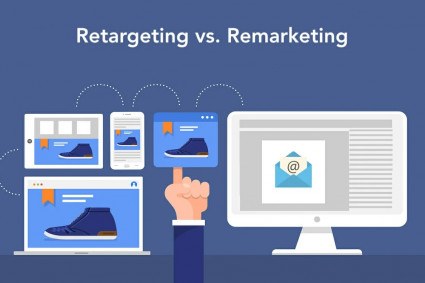
In today's fast-paced world, a brand's reputation can be significantly impacted by internal or external interactions. Business reputation management can help maintain a positive brand image, with good press and strong business results boosting it. Consistency and strategic approach are crucial for both short- and long-term rewards. This article provides a comprehensive overview of reputation management, its importance, and tools to automate workflows for your brand.
What is Reputation Management?
Reputation management involves influencing people's perception of a business or brand, focusing on its operations, communication, and reputation. It involves monitoring opinions, responding to misleading information, and identifying opportunities to improve the brand's reputation. This involves various business functions, such as marketing, communications, customer experience, and sales.
Importance of Business Reputation Management
Trust is crucial in purchasing decisions, and a brand's reputation is essential for maintaining a professional image. Online reputation management helps businesses address mistakes, boost brand visibility, build trust and credibility, understand customer preferences, dispel rumors and misleading information, increase revenue, establish thought leadership, and attract top talent. A strong reputation leads to increased sales, customer loyalty, and a strong online presence, making it a crucial factor in attracting and retaining top talent.
6 Key Aspects of Reputation Management
1. Online review management: This aspect involves monitoring and responding to reviews on various platforms such as Google, Yelp, and Glassdoor. It also includes analyzing trends and insights from these reviews to improve service.
2. Social listening and qualitative research: By listening to what people are saying about your brand on social media, you can gain valuable insights. Additionally, conducting qualitative research through surveys, interviews, and focus groups allows you to directly gather feedback and use it to enhance customer experiences.
3. Customer experience: Providing a positive customer experience is vital for your brand's reputation. Neglecting it can lead to negative consequences, such as customers sharing their negative experiences with others, not completing purchases, or switching to competitors.
4. Crisis communication: A crisis communication management strategy prepares your brand for unexpected events that may damage its reputation. This aspect involves having tools and tactics in place to address crises quickly and recover effectively.
5. Competitive analysis: Understanding how your brand's reputation compares to competitors is important. Conducting a competitive analysis helps you set benchmarks, identify areas for improvement, and gain insights into industry perceptions.
6. Brand advocacy: Encouraging customers and employees to advocate for your brand is powerful. Building relationships with advocates, rewarding them, and providing tools for sharing positive experiences and content can amplify your brand messaging and reputation.
How to create a Reputation Management Strategy
1. Selecting an online reputation management tool: Use a reputation management tool like Sprout to automate the monitoring and response process across various channels.
2. Gathering data from external sources: Monitor and analyze listening data, competitor data, and review data to track brand perception.
3. Gathering customer data: Integrate help desk and CRM platforms to gather customer feedback and gain a holistic view of the customer experience.
4. Reviewing brand experience: Analyze crucial KPIs such as feedback volume, sentiment analysis, share of voice, and feedback trends/themes.
5. Responding to reviews and social comments: Respond promptly and efficiently to reviews and social comments to meet customer expectations for social customer service.
6. Closing the loop: Respond to feedback, take action to address issues, and prevent future occurrences to demonstrate that customer feedback is valued and acted upon.
7. Being proactive: Utilize tools like Spike Alerts to monitor and address reputational threats in real-time, and use saved replies and automated chatbots to deliver timely responses.
8. Promoting positive aspects of the brand: Amplify positive reviews and user-generated content, and actively highlight positive aspects of the brand through various marketing efforts.
9. Asking for positive reviews: Encourage customers to leave positive reviews by directly asking and automating the process when possible.
10. Forecasting potential trends: Stay updated with current events and industry breakthroughs, and leverage social listening to identify opportunities for positive brand associations and storytelling.
Top 5 Business Reputation Management Software in the Market
1. Sprout Social: A reputation management tool with sentiment analysis, social listening, and review management, enhancing social presence for brands with existing social presence.
2. Qualitrics: A feedback collection platform for brands to organize customer, employee, and market data, offering various question types and templates. Ideal for qualitative research and specific market research, lacking social listening and management features.
3. Yext: Yext offers listings management, review management, and competitive analysis for businesses, but lacks social media functionality, making it more suitable for brick and mortar businesses with multiple locations or expansion.
4. Podium: Podium is a communication tool for local businesses, offering web chat, text campaigns, messaging, and calling. It offers convenient payment options but lacks social media management or analytics access, making it ideal for customer service and communication tasks.
5. Birdeye: Birdeye automates review requests, responds to customer reviews, distributes surveys, and fixes listings, offering AI-powered insights and sentiment trends. Suitable for businesses establishing social media presence, but lacks comprehensive reporting.
Conclusion
Reputation management involves building trust with your audience over time. Everyone makes mistakes, even the best brands face unfavorable reviews. But a strong strategy helps weather storms and position your brand in the best possible light, ensuring a positive brand image.






